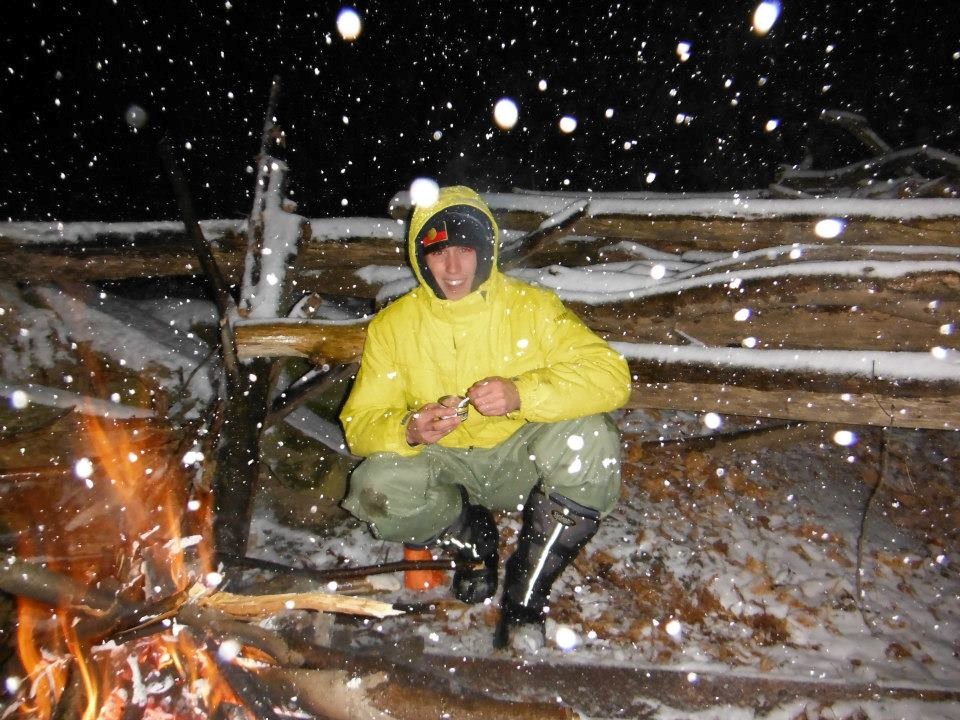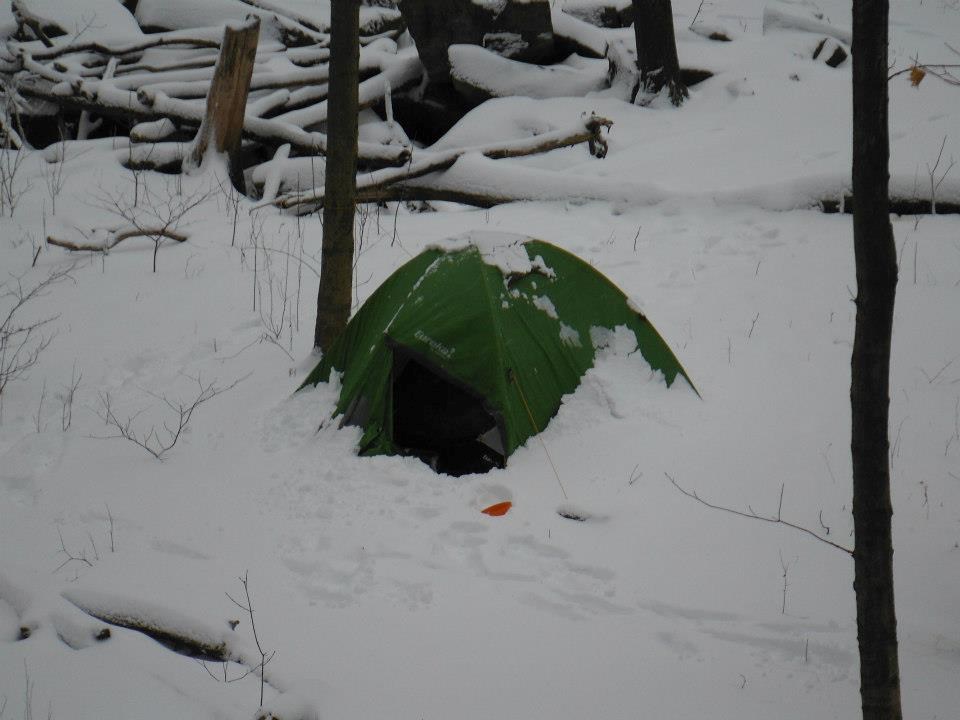
For Niagara-on-the-Lake, the first snowfall of this year was Sunday, Nov. 13. Nothing special, nothing stuck, but it happened.
We are now plunging deeper into winter while the mercury plunges on the thermometer
Once the awkward phase of grey skies and soggy earth passes, I find myself getting excited for winter camping.
I would imagine this is not exactly what you thought on Sunday, as you sat in the warmth of your dwelling and watched the indecisive precipitation fall to the ground. Snowflakes, slush, and flurries fell from the sky as we hovered around the magical moment of zero degrees Celsius.
Like a good thunderstorm, a snowstorm fires me up. The approach of a heavy snowfall or blizzard feels like every snowflake is trying to meet each of my cells and hydrate them with happiness, to create an energetic force so indifferent to our cozy human lives. Perhaps it’s the scenery it creates in its wake, and the storm’s humbling ability to make us adapt our otherwise dominating human lives for a moment. It could be the bleak, blunt, and mysterious solitude following a heavy snowfall which spiritually intrigues us.
I got into winter camping when I was about 20 years old. Naturally, I think the first story I need to share with you is what a miserable failure the initial winter camp-out was, and how such misery had quickly morphed into lessons learned and hilarious memories told.
I became a co-guinea pig for this icy camping experience with my younger brother, Isaac, about 15 at the time. My middle brother, Garrett, must have been at home in his bed laughing himself to sleep about our naivety this evening, as Isaac and I hiked up the Niagara Escarpment to a sheltered nook to set up camp.
Hiking up at sundown, our backpacks were filled with amateur intentions.
The conversation probably went something like this from my end, “Hey bro, if we just pick our absolute warmest clothes, and then layer them up twofold, that should be sufficient. We’ll go into the basement and pick the thickest Canadian Tire sleeping bags we have, and of course our snow pants and winter jacket. We should be good.”
Fast-forward through a night of fire, food, good laughs, and -10 C. It is now about 4:30 a.m. I hear Isaac’s voice next to me in the tent, but can’t even see his face or nose inside the cocoon of pathetic layering.
“Hey, are you cold?” he asks. I could hear his own answer in his voice. I answered, “Yeah, I’m cold, and I’ve barely slept because of it.”
We decided that we were too frigid to go back to sleep. It turns out that generic clothing and sleeping bags, no matter how many layers, weren’t going to cut it.
“We need to pack this tent up, fast. I’m mad and need to get home and get warm,” he said. Fair enough. I was feeling the exact same way. We hiked 45 minutes along the Bruce Trail and its associated side trails to get back to our place outside of Queenston and dove into a heated home like it was a super bowl touchdown.
There was a lot to learn from this winter camping experience, which made my next dozen or so in life much more pleasant. As pleasant as a summer camp out, I’d boldly venture to say.
Since then, I have successfully camped in -20 C, gone to bed after falling through an pond ice up to my waist, and have enjoyed intentionally trekking into snowfall or blizzard warnings to sleep in it.
The secret to making a winter campout not only successful, but a positive and rewarding experience, falls under two frozen factors: The joys of winter camping — seriously!
You can buy equipment, but you can’t buy attitude.
You can use an ordinary tent with a fly cover, but you need a roll-up thin and thermal mattress to prevent the cold earth from sucking your body heat into the soil. A tarp under the tent helps with that, too. I pack a thin wool blanket to put over this mattress, and then we get to the good stuff — a proper winter sleeping bag.
Many of these are rated with a “proofing” of temperature that a standard healthy adult can withstand while inside. Mind you, if a sleeping bag says it is -20 C proof, like mine does, that doesn’t mean you are going to be perfectly toasty or comfortable at -20. However, you will stay alive and likely get to sleep with some cold chills. Any temperature less than that gets more pleasant.
You’ve got to wear some base layers inside this sleeping bag, like long johns or a snuggly sweater top. Don’t forget the toque to prevent heat loss from your head, and you can put tomorrow’s clothes inside the foot end of your sleeping bag so your body heat can warm them up a little overnight. No, you do not need to pee in a bottle to keep you warm, but to each their own. If you have the ability to pack extra, throw another blanket on top of your sleeping bag for insurance temperature trapping.
You also need to adopt a temporary and adventurous attitude.
Winter camping can successfully give an enormous sense of accomplishment and and empowerment, simply knowing you did it. You woke up the next morning, you weren’t miserably cold, and you beat the elements while NOTL’s other 17,000 plus residents slept inside. It’s a really cool feeling, pun intended. It’s almost like you’ve cheated the system while locals slept apart from it and animals hibernated against it.
That is, except, for the hoots and whinnies of great horned owls and eastern screech owls while you fall asleep in your cozy creation.
Upon wrapping up this article, I yelled down the hall to Isaac. I told him he would make the cut for this week’s edition, and I asked him if he remembers the camping adventure, and being cold.
“No, bro. I remember being that (insert expletive) cold.”
Yet I bet he would go again with me.
